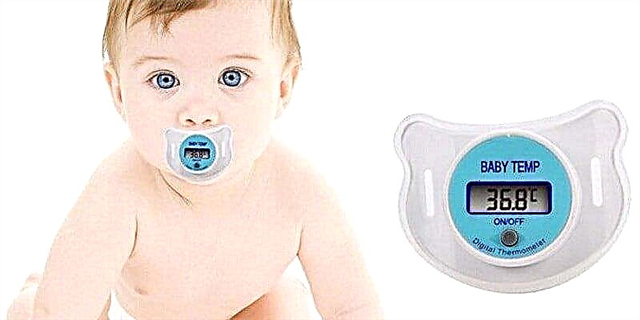The term “intracranial hypertension” is widespread in modern medicine and often frightens parents. However, in fact, this condition is not an independent diagnosis, but is only a symptom of a separate disease.
Intracranial hypertension accompanies many childhood neurological diseases. Its symptoms can be almost imperceptible, and can significantly affect the physical, motor and neuropsychic development of the baby, on his condition and even threaten his life.
Diseases that are accompanied by intracranial hypertension can occur in a child of any age. It is important for dads and moms to pay attention to alarming symptoms in time and consult a specialist in order to avoid irreparable consequences.
Do not confuse the concepts of intracranial pressure and intracranial hypertension. Intracranial pressure, like arterial pressure, is a physiological concept. Intracranial hypertension is caused by increased intracranial pressure and is a symptom of the disease.
What is intracranial pressure?
CSF, or cerebrospinal fluid, is formed in the cranial cavity from blood by filtering it in the choroid plexuses of the third and fourth ventricles. Then, through special holes, it enters the cisterns located at the base of the brain. Further, the cerebrospinal fluid circulates over its surface, filling all free spaces.

Cerebrospinal fluid is absorbed by special cells in the arachnoid membrane of the brain. So its surplus is eliminated.
In its composition, CSF contains hormones, vitamins, organic and inorganic compounds (proteins, salts, glucose), cellular elements. Due to a certain ratio of all components, the required viscosity is maintained.
The composition and amount of cerebrospinal fluid is maintained by the body at the same level. Any changes are indicative of pathology.
Liquor has a cushioning function. The brain and spinal cord seem to "hang" in a confined space and do not come into contact with the bones of the skull and vertebrae. During movement and impacts, soft tissues are subject to impacts, and the cerebrospinal fluid softens them. He also participates in the metabolism. Brain cells receive nutrition through the cerebrospinal fluid, which is necessary for their vital activity, remove unnecessary waste products.
So, the cerebrospinal fluid is in a closed cavity in motion, constantly being formed and absorbed. During its circulation through the cerebrospinal fluid, it creates a certain pressure on the bone tissue and the brain, which is called intracranial. And it is maintained at a strictly defined level.
Why does intracranial pressure change?
 An increase in intracranial pressure, that is, the syndrome of intracranial hypertension, occurs due to a number of diseases in which excessive production of cerebrospinal fluid occurs, its absorption decreases, or circulation is disturbed.
An increase in intracranial pressure, that is, the syndrome of intracranial hypertension, occurs due to a number of diseases in which excessive production of cerebrospinal fluid occurs, its absorption decreases, or circulation is disturbed.
Intracranial hypertension accompanies a number of diseases:
- intrauterine infections;
- hypoxic lesions of the central nervous system;
- traumatic lesions of the central nervous system;
- developmental abnormalities of the brain and skull bones, for example, craniostenosis;
- hydrocephalus;
- inflammatory diseases of the brain (neuroinfections);
- brain tumors;
- anomalies in the structure of blood vessels;
- hemorrhage in the brain;
- various severe metabolic diseases (severe diabetes mellitus, mucopolysaccharidoses).
With the above diseases, pathology of the cerebrospinal fluid may occur (narrowing of the Sylvian aqueduct, its bifurcation and branching). In premature babies, as well as in children who have undergone meningitis, hemorrhages, intrauterine viral infections, the glial lining of the aqueduct grows and is completely blocked (obstruction).
As a result of congenital malformations of the cerebral vessels (malformations), their abnormal growth occurs in the form of glomeruli. These glomeruli grow in size and can obstruct the flow of cerebrospinal fluid.
Various pathological processes in the posterior cranial fossa (vascular malformations; Chiari malformation, when the structures of the brain extend beyond the skull through the foramen magnum; cerebellar anomalies; tumors) are important causes of impaired CSF circulation.
Various hemorrhages create an obstacle to the flow of cerebrospinal fluid. In meningitis, pathogens secrete a thick and viscous exudate, also causing obstruction of the cerebrospinal fluid. Due to intrauterine infections, they can be destroyed.
There is a concept of benign intracranial hypertension. This is a group of conditions with an increase in intracranial pressure without signs of blockage of the cerebrospinal fluid and neuroinfection.
Benign intracranial hypertension is a diagnosis of exclusion unless other serious causes of increased intracranial pressure are found.
Symptoms of increased intracranial pressure
The clinical manifestations of intracranial hypertension are varied and depend on its cause.
There are several common indications.

- In infants, the size of the head is rapidly growing. You can notice the features of its shape: a wide overhanging forehead, the predominance of the cerebral section of the skull over the front.
- Widely open fontanelles, their protrusion and pulsation, as well as large discrepancies of the cranial sutures. In babies with intracranial hypertension, the enlarged saphenous veins in the head area draw attention.
- A symptom of Grefe, or a symptom of the setting sun, appears: the child has a white stripe of sclera between the upper eyelid and the iris. The baby's eyes are wide open, and the look looks surprised. Also, the child may throw his head back during sleep.
- Characterized by constant high-pitched monotonous crying for no apparent reason, the so-called cerebral crying.
- Children with intracranial hypertension have persistent regurgitation with a fountain.
- In severe cases, the baby lags behind in development: he begins to hold his head, sit, crawl, speak later than his healthy peers.
- Formidable signs are the appearance of seizures, tremors, and vomiting.
- Irritability, lethargy, poor appetite, vomiting, superficial REM sleep are characteristic symptoms of intracranial hypertension in children, both younger and older. Headaches appear during sleep and in the morning, during the day they are less pronounced.
- Gradual changes in personality, decreased school performance, dizziness, changes in visual acuity, double vision in older children suggest an increase in intracranial pressure.
- With intracranial hypertension, acutely appearing after trauma to the brain and skull, loss of consciousness and coma are possible.
Diagnostics and differential diagnostics
If you suspect a disease that is accompanied by symptoms of intracranial hypertension, you should definitely consult a doctor, and not engage in self-diagnosis.
To identify the causes that cause an increase in intracranial pressure, it will be necessary to examine several specialists. The child needs to be examined by a pediatrician, neurologist, ophthalmologist, and in some cases a geneticist, infectious disease specialist, neurosurgeon.
At the age of one year, the baby should visit a pediatrician every month. The doctor measures the circumference of the head and the size of the large fontanel, compares the sizes for previous months, assesses the motor and neuropsychic development of the baby, analyzes the complaints of the parents. The pediatrician may also notice head deformities.
If the examination reveals any deviations, and even more so if they are combined with the above symptoms, the baby is sent to other specialists for further examination.
The examination of a child with intracranial hypertension begins with taking an anamnesis. Information about the course of pregnancy and childbirth is important. Familial cases suggest hereditary diseases. Indications of prematurity and a history of intracranial hemorrhage, meningitis, or meningoencephalitis are important.
The shape of the head, its size, and the presence of a venous pattern are important for diagnosis. When examining the back area, attention is paid to skin abnormalities localized along the spine, hair bundles, wen, vascular tumors, which may also indicate anomalies in brain development.
The neurologist also assesses the child's muscle tone, reveals focal neurological symptoms, damage to the intracranial nerves.
When the skull is percussed, a characteristic sound can be detected - this is a symptom of a "cracked pot". During auscultation of the skull, if there is an anomaly in the development of cerebral vessels, you can hear the murmurs.
To identify metabolic disorders, general blood and urine tests, biochemical blood tests may be needed. According to the indications, the electrolyte and gas composition of the blood is examined.
The so-called neuroimaging methods are important for diagnosing the causes of intracranial hypertension: X-ray of the bones of the skull and spine, neurosonography, ultrasound Doppler vascular ultrasound, computed tomography and magnetic resonance imaging. These methods will make it possible to determine the size of the ventricles and other structures of the brain, assess the location of blood vessels and blood flow in them, and also identify pathological formations in the cranial cavity (tumors, cysts).
The increased size of the ventricles of the brain, detected on neurosonography, without the other symptoms listed above, are not signs of intracranial hypertension.
The ophthalmologist must necessarily examine the fundus of the baby. A condition such as chorioretinitis suggests intrauterine infection. Optic disc edema is associated only with intracranial hypertension. In some cases, optic nerve atrophy is detected, often partial.
In some cases, it is necessary to use invasive diagnostic methods when it is necessary to directly intervene in the cerebrospinal fluid pathways. If the child is suspected of having meningitis or meningoencephalitis, cerebrospinal fluid is taken for analysis. If intracranial hypertension is caused by an inflammatory process, pathogenic microorganisms, an increased amount of protein, neutrophils, and leukocytes can be found in it. With neoplasms, an increase in protein levels is possible, but the cerebrospinal fluid will remain sterile.
Intracranial pressure can be truly assessed only by invasive methods, when a needle is inserted into the cavity of the ventricles of the brain and a manometer is connected.
How to treat intracranial hypertension
Depending on the cause leading to intracranial hypertension, different treatments are used.
With mild manifestations of the syndrome of intracranial hypertension, its good quality, the doctor can prescribe only non-drug treatment.

- Compliance with a salt-free diet and drinking regimen.
- Strict adherence to the daily routine, restriction of watching TV, playing games at the computer and gadgets; walks in the open air.
- Massage, swimming and remedial gymnastics.
- Physiotherapy treatment, acupuncture.
In some situations, the connection of drug therapy is required. The following groups of drugs are prescribed:
- Diuretics (diuretics) promote the elimination of excess fluid from the body, improve the absorption of cerebrospinal fluid and reduce the rate of its formation.
Together with diuretics, the doctor may prescribe potassium and magnesium preparations, since these substances are excreted from the body along with the liquid. A certain reception scheme is assigned, which must be strictly adhered to.
- Nootropics improve metabolic processes in the tissues of the brain and spinal cord, contribute to its recovery.
- Drugs affecting vascular tone. They improve blood flow and nutrition to the brain.
- According to the indications, sedatives, anticonvulsants, antibacterial, hormonal drugs are prescribed.
- In situations that threaten the child's life, hydrocephalus, developmental defects, brain tumors, surgical treatment of intracranial hypertension is prescribed. Extracranial shunting is widely used. Its essence lies in the fact that the excess fluid is removed from the ventricles by means of a shunt into a fully functioning vessel.

In ventriculoperitoneal shunting, the ventricular cavity is connected to the abdominal cavity by means of a tube, where excess cerebrospinal fluid will flow. Ventriculoatrial bypass surgery involves connecting the cerebral ventricle with the right atrium of the heart and the superior vena cava. This method of shunting is more effective, but technically more difficult to perform. The inconvenience also lies in the need to replace the shunt some time after the operation.
- Intracranial shunting is also used to restore normal CSF flow and reduce intracranial pressure. It consists in the connection of different parts of the cerebrospinal tract and cerebral vessels.
Forecast
With increased intracranial pressure, the prognosis will depend on the cause of the syndrome. With delayed treatment in the future, the child may have impairments to memory, attention, intelligence, higher mental functions.
Visual abnormalities include decreased visual acuity, impaired visuospatial orientation, visual field defects, and atrophy of the optic nerves. Benign intracranial hypertension can often go away on its own and without consequences for the baby's health.
Symptoms of increased intracranial pressure should alert parents. It is necessary to contact specialists in a timely manner to find out the reasons and correct this condition in order to prevent irreversible consequences for the baby.



